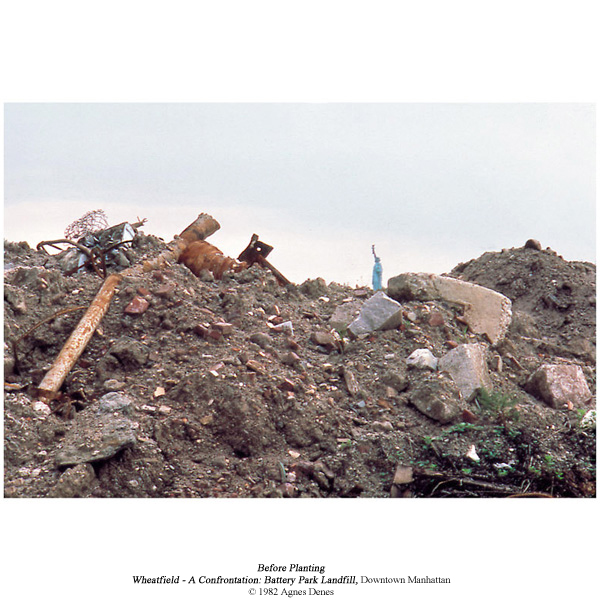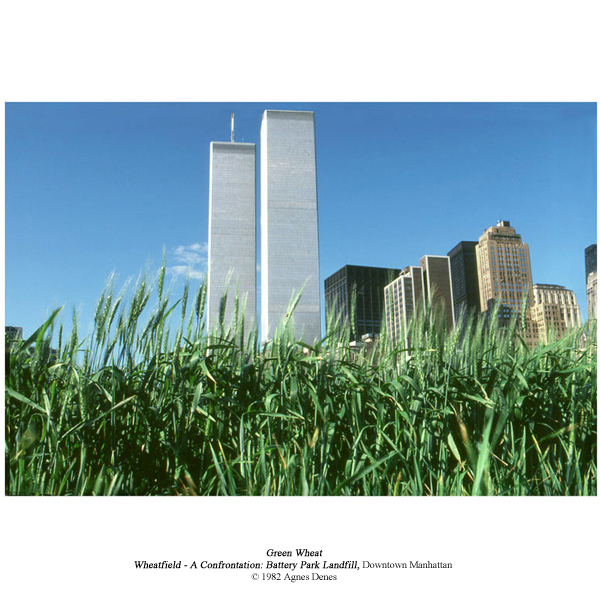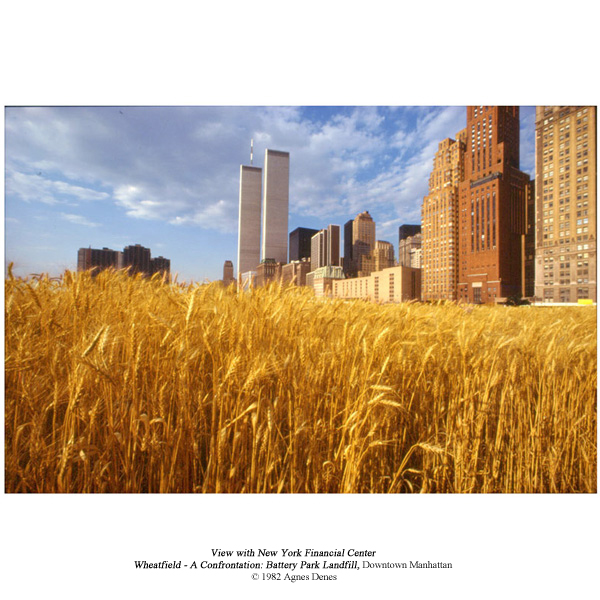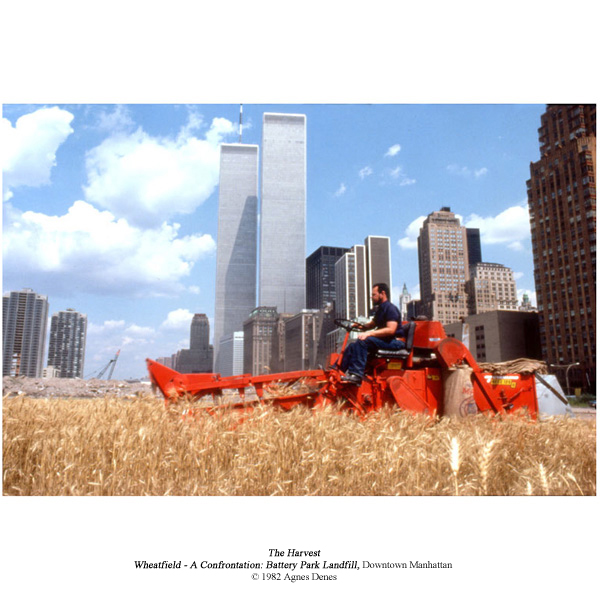There are a few notable artworks that kickstarted the genre of Ecological Art starting in the 1950s. They were started with the intention of making an actual change to the physical space of the landscape to address the existing environmental-related problems of that time.
A famous early example is Wheatfield, a Confrontation done in 1982 by Agnes Denes. She converted a 2-acre space of landfill in New York, into a wheat field that was eventually harvested. The paradoxical location of the work was in lower Manhattan, near iconic places such as Wall Street, World Trade Center and the Statue of Liberty. This artwork was a call to rethink priorities in consumerism and the economy, and the mismanagement of waste in the urbanized city center of New York.

photo credits: agnesdenesstudio.com


Wheatfield, a Confrontation photo credits: www.studiointernational.com



photo credits: www.stuck.be
Impact of this artwork?
It was a modeling of volunteerism, community work, and reaccessing priorities of life in the city. After this artwork was done, the harvested grain was dispersed over 28 cities around the world in the exhibition called “The International Art Show for the End of World Hunger”, organized by the Minnesota Museum of Art (1987-90). The seeds were carried away by people who planted them in many parts of the globe. Artists from other parts of the world re-staged the Wheatfiled in their own cities. The process of the work itself that involved the Agnes Denes and a handful of volunteers and a gardener for the city working 7 days a week to hand plant the wheat was a model of efforts in converting a wasteland to food.
This well known work was one of the identifiers of what Ecological Art represents. However, it is important to note that Ecological Art practitioners come from a wide scope of backgrounds, and are equppied with different skills, having different ideas, and hence present their work in varying styles. Therefore, the magnitude, effectiveness and impact that these works have on conservation sits on a scale.
Let’s now look at the different approaches in Ecological Art to look into the different ways an environmental topic is tackled by Ecological Art practitioners.